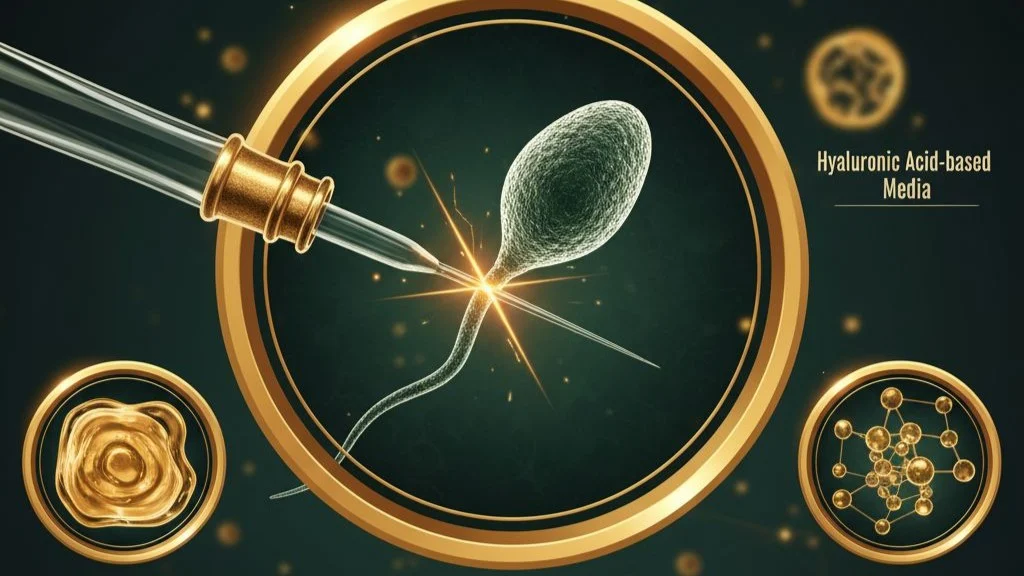
Rahul Manoj: Key Techniques for Sperm Immobilization in ICSI to Improve Fertilization Success
Rahul Manoj, Senior Embryologist at Best Life Fertility Center, shared a post on LinkedIn:
“Day 37 — Sperm Immobilization for ICSI: Technique, Importance and Media
Before a single sperm enters the oocyte, one of the most delicate yet crucial steps in ICSI is sperm immobilization. Though it may seem routine, how and where we immobilize the sperm directly affects fertilization success and oocyte activation.
Why Immobilize Sperm?
- To halt tail movement for smooth aspiration and controlled injection.
- To induce membrane rupture, enabling release of oocyte-activating factors (like PLCζ).
- To enhance fertilization — non-immobilized sperm often fail to trigger oocyte activation.
Correct Immobilization Technique
- Under 400×–600× magnification, select a progressively motile, morphologically normal sperm.
- Align tail perpendicular to the holding pipette.
- Press gently at the mid or distal tail (midpiece–principal piece junction) with the ICSI pipette until the tail snaps.
- Confirm complete immobilization — sperm stops moving, but head integrity remains intact.
- Aspirate sperm for injection.
Media Used to Slow Down or Immobilize Sperm
Different media help reduce sperm motility and facilitate easier immobilization under the microscope:
Media to slow down sperm motility during sperm selection for ICSI
PVP (Polyvinylpyrrolidone) 7–10% viscous polymer solution Temporarily slows down sperm, making handling easier before immobilization.
Hyaluronic Acid-based Media (HA Binding Media) Mimics zona pellucida binding Slows down sperm naturally; helps select mature, DNA-intact sperm for ICSI (PICSI method).
Sperm Slow (Commercial) Viscous buffered medium containing methylcellulose Reduces motility without altering membrane integrity; ideal for microinjection timing.
Common Errors to Avoid
- Immobilizing near the head → risks acrosome or DNA damage.
- Incomplete tail breakage → sperm remains motile, increasing oocyte rupture risk.
- Overexposure to viscous media → may hinder sperm retrieval and viability.”
Stay updated on all scientific advances in the field of fertility with Fertility News.
-
Oct 11, 2025, 06:44The Global IVF Market Is Set to Reach $65B by 2032 – Meddilink
-
Dec 21, 2025, 01:49CDC Releases 2024 Pregnancy Mortality Data – Preeclampsia Foundation
-
Dec 21, 2025, 01:30Caitlin Wyrwoll: New Insights on Maternal Health and Extreme Heat
-
Dec 20, 2025, 10:57Clare Pin-Chia Huang: New Research Links Maternal Diabetes to Pregnancy Risks
-
Dec 20, 2025, 10:53Evaluating Maternal and Neonatal Health in Rheumatoid Arthritis Pregnancies – Hiroki Ozawa
-
Dec 20, 2025, 10:36Enhancing Care for Women Facing Recurrent Pregnancy Loss – SOGC
-
Dec 20, 2025, 05:00Ilana Ferhadian: Celebrating Book Launch
-
Dec 19, 2025, 16:21Launch of National Fertility Plan Marks Public Health Milestone – Collectif BAMP Association
-
Dec 18, 2025, 13:55Insights from Cendrine Siraudin on Fertility Support – Destination Santé
-
Dec 18, 2025, 13:34Alberto Sifuentes Giraldo: Key Insights on Antiphospholipid Syndrome From Recent Study
